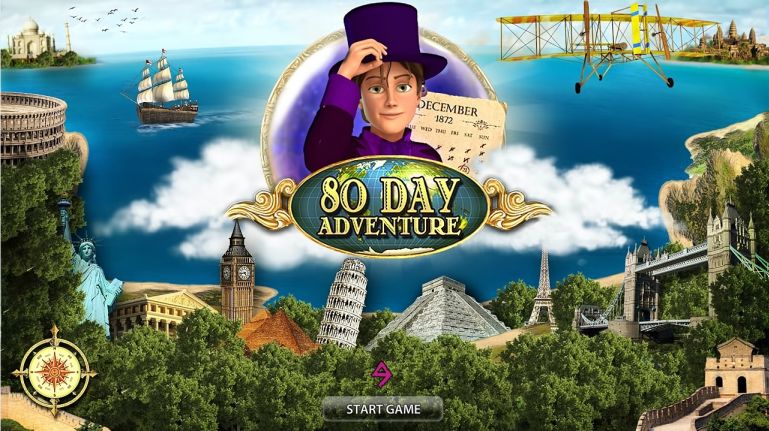The concept of an 80 Days Adventure has captivated the imaginations of readers, travelers, and adventure-seekers for generations. Inspired by Jules Verne’s classic novel “Around the World in Eighty Days,” this idea transforms a seemingly impossible journey into a thrilling trek across the globe. This blog post will delve into the nuances of embarking on such an adventure, exploring its historical significance, practical considerations for modern-day voyagers, and personal reflections on the meaning of exploration.
Through each section, we will take a closer look at various elements that define the 80 Days Adventure, including transportation methods, cultural exchanges, self-discovery, and the inherent challenges faced along the way. Whether you are a seasoned traveler or dreaming about your next excursion, this guide will offer insights and inspiration for your very own journey around the world FB88.
The Historical Foundation of the 80 Days Adventure
The 80 Days Adventure is rooted deeply in the literary prowess of Jules Verne, who penned “Around the World in Eighty Days” in 1873. This masterpiece not only entertains but also serves as a reflection of the era’s technological advancements and global aspirations.
In this section, we will explore the historical context surrounding Verne’s work, uncovering the socio-political climate of the time, the significance of travel during the Victorian era, and how these factors contributed to the allure of global exploration.
The Era of Exploration
The 19th century was a pivotal moment in human history marked by rapid industrialization, colonial expansion, and significant scientific discoveries.
Travel became increasingly accessible due to advancements in transportation technology, such as the steam engine, which facilitated faster and more efficient journeys. The proliferation of railways and steamships allowed explorers and adventurers to traverse previously unimaginable distances in record time.
This newfound ability to travel across continents fueled the imagination and spurred many to seek new cultures, ideas, and experiences. Verne’s protagonist, Phileas Fogg, embodies this spirit of exploration and curiosity that defined the age. His daring wager to circumnavigate the globe reflects humanity’s relentless desire to push boundaries and challenge societal norms.
Travel in the Victorian Era
During the Victorian era, travel was both a privilege and a pursuit of the elite.
The upper classes often embarked on grand tours of Europe, viewing travel not just as a leisurely activity but as an essential part of one’s education and social standing. These voyages were characterized by visits to art galleries, historical sites, and cultural landmarks, which served to enhance their worldview and sophistication.
Verne’s narrative cleverly intertwines these historical elements, demonstrating how Fogg’s journey serves as both an adventure and a commentary on society’s perceptions of time, propriety, and progress. By placing a gentleman like Fogg in the midst of diverse cultures and unexpected challenges, Verne invites readers to contemplate the transformative power of travel.
The Significance of Travel Literature
Travel literature flourished during the Victorian period, with authors documenting their experiences in exotic locales.
Writers such as Mark Twain and Robert Louis Stevenson captured the spirit of adventure through their narratives, which served to inspire future generations of explorers. They painted vivid pictures of different cultures and landscapes, allowing readers to vicariously experience the thrill of discovery.
Verne’s work stands out in this genre because it combines fact with fiction, creating a fantastical journey that still resonates with readers today. The 80 Days Adventure taps into the collective yearning for adventure and the thrill of the unknown, which continues to inspire travelers centuries later.
Planning Your Own 80 Days Adventure
Embarking on an 80 Days Adventure requires careful planning and consideration. It is not merely a whimsical notion; rather, it demands strategic foresight, financial planning, and logistical arrangements.
In this section, we will discuss practical tips for crafting your itinerary, budgeting for your journey, and selecting modes of transportation, all while ensuring flexibility to adapt to unforeseen circumstances along the way.
Crafting Your Itinerary
An essential step in planning any trip is crafting a detailed itinerary that outlines your journey’s structure.
Start by identifying key destinations you wish to visit, keeping in mind the unique experiences each location offers. Consider popular tourist spots, hidden gems, and cultural hubs where you can immerse yourself in local traditions.
For an 80 Days Adventure, you might want to establish a starting point and evaluate potential routes based on available transportation options. Create a balance between time spent in transit and time allocated for exploration. Remember, while it’s tempting to fill every day with activities, leaving some flexibility in your schedule allows for spontaneous adventures—a hallmark of true exploration.
Budgeting for Your Journey
A well-planned budget is vital for the success of your adventure.
Factor in the costs of flights, accommodations, meals, transportation, and activities. Additionally, consider having a contingency fund for unexpected expenses, as travel rarely goes exactly as planned.
When estimating your budget, research various pricing options for accommodations—ranging from hotels to hostels and home-sharing platforms. Furthermore, investigate local dining options that allow you to savor authentic cuisine without breaking the bank. Engage in free or low-cost activities, such as exploring parks, museums, and cultural festivals, which can provide enriching experiences while keeping your finances intact.
Selecting Transportation Methods
Transportation plays a crucial role in shaping your travel experience.
Evaluate the most efficient and cost-effective means of getting from one destination to another. Depending on your route, options may include long-haul flights, trains, buses, and even sailing. Each method has its own set of advantages and disadvantages, and your choice should align with your adventure’s overall theme.
For example, train travel can be a scenic way to appreciate the landscape and culture, while flying may save you precious time on longer legs of your journey. Additionally, don’t overlook alternative modes of transport, such as bicycles or rickshaws, which can offer unique perspectives on a region and enhance your connection to local communities.
